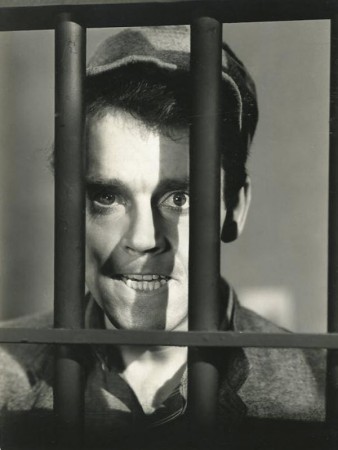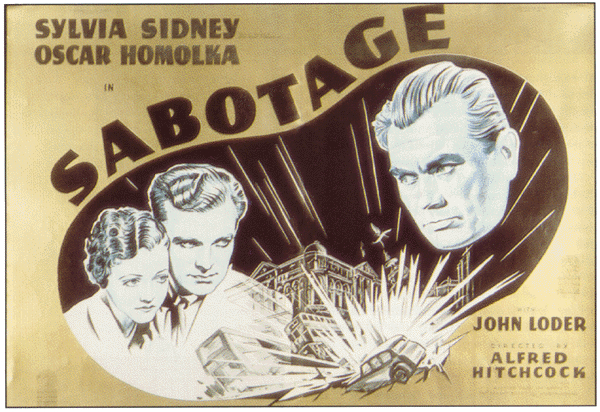 Stereotypes run amuck in this Warner Brothers pre-code from 1933. Yet it is these categorizations that make this pre-code interesting to watch. It begins on the Lower East Side of New York, Orchard Street to be specific, an ethnic neighborhood which at various times was filled with Jewish, German, Italian and Puerto Rican immigrants among others. The script focuses on an Italian family. Tony has called for a doctor, his wife is giving birth, and he’s crying for help. An ambulance arrives with a doctor in tow, our heroine, Mary Stevens (Kay Francis). Tony is shocked. My God, the doctor is a woman! No, no, no, he wants a real doctor…a man! Having already lost one child, he threatens Mary with a machete if she fails to help his wife through to a successful birth. Mary locks herself in the bedroom with the expectant mother while Tony is being restrained by the police (called earlier by the frightened ambulance driver). As expected, the baby is successfully delivered and all is well. This short opening scene reveals how far we have come in our labeling of people and yet it also reveals how far we still have to go. I am sure there are still men out there who do not want to be treated by a female doctor just because she is a woman. Continue reading →
Stereotypes run amuck in this Warner Brothers pre-code from 1933. Yet it is these categorizations that make this pre-code interesting to watch. It begins on the Lower East Side of New York, Orchard Street to be specific, an ethnic neighborhood which at various times was filled with Jewish, German, Italian and Puerto Rican immigrants among others. The script focuses on an Italian family. Tony has called for a doctor, his wife is giving birth, and he’s crying for help. An ambulance arrives with a doctor in tow, our heroine, Mary Stevens (Kay Francis). Tony is shocked. My God, the doctor is a woman! No, no, no, he wants a real doctor…a man! Having already lost one child, he threatens Mary with a machete if she fails to help his wife through to a successful birth. Mary locks herself in the bedroom with the expectant mother while Tony is being restrained by the police (called earlier by the frightened ambulance driver). As expected, the baby is successfully delivered and all is well. This short opening scene reveals how far we have come in our labeling of people and yet it also reveals how far we still have to go. I am sure there are still men out there who do not want to be treated by a female doctor just because she is a woman. Continue reading →
 The classic Depression era musical, Gold Diggers of 1933, will be on TCM Thursday February 9th at 10:15PM (eastern). Directed by Mervyn LeRoy, with a little help from Busby Berkeley, the film stars Joan Blondell, Ruby Keeler and Aline McMahon as three out of work chorus girls sharing a cheap apartment all looking for work, love and money. Work comes with the help of rival Ginger Rogers who tells the ladies about a new show being readied for Broadway by producer Ned Sparks.
The classic Depression era musical, Gold Diggers of 1933, will be on TCM Thursday February 9th at 10:15PM (eastern). Directed by Mervyn LeRoy, with a little help from Busby Berkeley, the film stars Joan Blondell, Ruby Keeler and Aline McMahon as three out of work chorus girls sharing a cheap apartment all looking for work, love and money. Work comes with the help of rival Ginger Rogers who tells the ladies about a new show being readied for Broadway by producer Ned Sparks. A grisly mass murderer who is known as the “Full Moon Killer,” his victims are always attacked when the moon is full, is on the loose in New York City. The only clue the police have is that the killer must have a medical background. Doctor Xavier, aka Doctor X, (Lionel Atwell) and his staff at a local medical institute have become the main suspects since the victims are not only strangled but cannibalized. The good doctor convinces the police to let him conduct an in house investigation of his staff for 48 hours so as not to stain the reputation of the institute. They agree.
A grisly mass murderer who is known as the “Full Moon Killer,” his victims are always attacked when the moon is full, is on the loose in New York City. The only clue the police have is that the killer must have a medical background. Doctor Xavier, aka Doctor X, (Lionel Atwell) and his staff at a local medical institute have become the main suspects since the victims are not only strangled but cannibalized. The good doctor convinces the police to let him conduct an in house investigation of his staff for 48 hours so as not to stain the reputation of the institute. They agree.  Let Us Live is based on a March 1936 Harper’s magazine article by Boston Globe crime reporter, Joseph F. Dinneen, called Murder in Massachusetts. Dinneen’s true story focuses on two taxi cab drivers identified by almost a dozen witnesses for killing a man during a Lynn, Massachusetts movie theater robbery. The real killers, arrested about three weeks later were small time Jewish hoods Abraham Faber and brothers Irving and Murton Millen. The real killers’ story is rather fascinating in itself. Abraham Faber seemed like an unlikely individual to become a hoodlum. Faber attended MIT, graduating with a degree in aeronautical engineering. The Millen brothers were thugs. Small time hoods who hauled illegal booze during the prohibition days. The threesome apparently knew each other from days gone by growing up in Roxbury, Mass. Unemployed during the Depression, Abraham Faber reconnected with his childhood friends and the trio began a small time crime spree. In January, 1934 they graduated to murder when they shot a man during the Paramount theater robbery in Lynn, Mass. One month later, they robbed the Needham Trust Co., killing two police officers and wounding a fire fighter in the process. About three weeks later in New York City two of the men were arrested and confessed to the crimes. The third man was arrested in Boston. The taxi cab drivers arrested for the first murder were released. The Farber-Millen gang were convicted and executed in June of 1935.
Let Us Live is based on a March 1936 Harper’s magazine article by Boston Globe crime reporter, Joseph F. Dinneen, called Murder in Massachusetts. Dinneen’s true story focuses on two taxi cab drivers identified by almost a dozen witnesses for killing a man during a Lynn, Massachusetts movie theater robbery. The real killers, arrested about three weeks later were small time Jewish hoods Abraham Faber and brothers Irving and Murton Millen. The real killers’ story is rather fascinating in itself. Abraham Faber seemed like an unlikely individual to become a hoodlum. Faber attended MIT, graduating with a degree in aeronautical engineering. The Millen brothers were thugs. Small time hoods who hauled illegal booze during the prohibition days. The threesome apparently knew each other from days gone by growing up in Roxbury, Mass. Unemployed during the Depression, Abraham Faber reconnected with his childhood friends and the trio began a small time crime spree. In January, 1934 they graduated to murder when they shot a man during the Paramount theater robbery in Lynn, Mass. One month later, they robbed the Needham Trust Co., killing two police officers and wounding a fire fighter in the process. About three weeks later in New York City two of the men were arrested and confessed to the crimes. The third man was arrested in Boston. The taxi cab drivers arrested for the first murder were released. The Farber-Millen gang were convicted and executed in June of 1935. 




